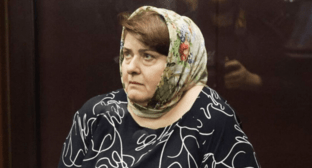23 May 2003, 18:28
Ingushes
They call themselves galgai. Nation in Ingushetia. Their population in Russia according to the census of 1989 is 215,1 thousand people. They belong to the Balkan-Caucasus race of the big European race. They speak the Ingush language of the Nakh-Dagetan branch. Russian language is also common. Religious people are Moslems-sunnits.
Together with the related Chechens Ingushes are the native population of the North Caucasus. Originally they lived on a plateau and in the mountains in separate societies: Jerakhov, Feppin (Kistin), Galgai (hence the way Ingushes call themselves),Tsorin and Metskal. The movement of the mountain Ingushes to the plain started in the 16-17th centuries and became especially intensive in the 19th century after Ingushetia joined Russia. One of the first settlements of Ingushes on the plain was the village Angush in the Tarskaya valley (hence the name ?Ingushes?).
In 1924 within the Russian Soviet Federative Socialist Republic there was formed the Ingush Autonomous District, in 1934 it was united with the Chechen Autonomous District and formed the Chechen-Ingush Autonomous District. In 1936 the District was renamed the Autonomous Soviet Socialist Republic. In 1944 the Autonomous Republic was abolished, Ingushes and Chechens were evicted against the law. The Chechen-Ingush Autonomous Soviet Socialist Republic was restored in 1957, at the same time Ingushes were allowed to return to their ethnic territory. In 1991 the Chechen-Ingush Republic divided into two administrative-territorial parts - Chechen Republic and the Ingush Republic.
Traditional occupations of Ingushes both in the mountains and on the plain are cattle-breeding (mainly sheep, but also cows, oxen, buffaloes, horses), in the plain - agriculture (the main crop of the 19th century was corn). Making broadcloth was the main home trade.
Traditional settlements were located on the steep mountain slopes and in the bottoms of isolated canyons. The common type of dwelling is a three-floor stone house (lower floor is a room for the cattle, the upper ones with a hearth - the living space and for defense). In the medieval villages next to the houses there are towers for living and defense, castles and defense walls. In the valley the Ingushes built big villages along the rivers and roads. The type of a dwelling is a clay-walled hut, later a long adobe or turluk house in which each room had an exit to the terrace.
Traditional costume of the Ingushes is mainly similar to the costume of the neighbor peoples of the North Caucasus (Chechens, Osetins). A specific element of the male costume is a high papakha (fur hat), cherkeska, of the female costume - a sheepskin coat, a wide dress, (sometimes trousers).
Traditional food - mainly milk products, flour dishes, fruit and meat.
The Ingush folklore is rich in historical contents; important lace is taken by mythology, Nart epic stories, fairy-tales, legends, songs - heroic, wedding, love, betrothal, ritual; gnomic genres. Common musical instruments - a three-string mountain violin, percussion instruments; the folk dance is lezghinka with two dancers.




